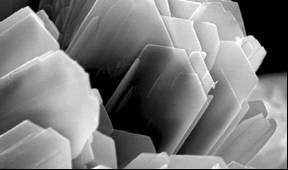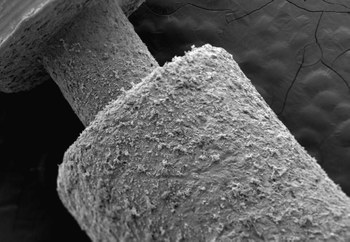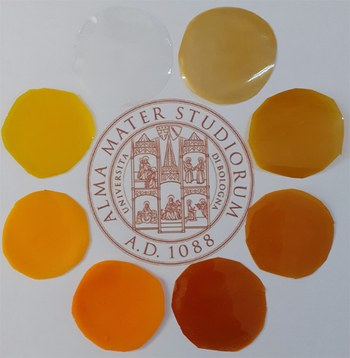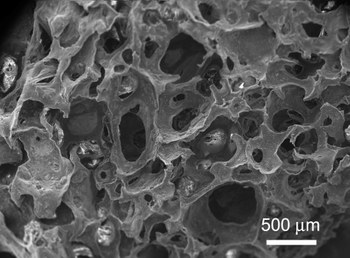Advanced Biomaterials

Biofunctionalized Micro- and Nano-crystals
Due to their excellent biocompatibility and bioactivity calcium phosphates (CaPs) nanocrystals are widely employed for the preparation of biomaterials for hard tissues repair. Surface properties, such as topography, chemistry, energy or crystallinity govern the cell-substrate interaction and biological tissue response to synthetic materials.
Our research activity is addressed to the synthesis and characterization of CaPs enriched with biological relevant ions and organic molecules or macromolecules for different applications, including bone filler, coatings of metallic implants, bone cements, potential delivery systems of osteogenic agents, such as growth factors and hormones, or other specific drugs, such as bisphosphonates.

Biomimetic Coatings
Materials for bone implants include metals, ceramic and polymers, depending on the implantation site. Failures, which are mainly ascribed to low and incomplete osteointegration, and to stress shielding, occur frequently. Coating the implants with a thin layer of bone-like calcium phosphate improves osteointegration thanks to the excellent bioactivity of the calcium phosphate. Biomimetic approach requires relatively simple and not expensive facilities, and involves the possibility to coat complex-shaped materials, including porous implants.
The aim of our research activity is to optimize the conditions of deposition and to improve the properties of the coating. Biofunctionalization of the calcium phosphate thin layer is achieved through co-precipitation of ions, drugs, macromolecules and biological molecules together with the inorganic phase

Gelatin-based materials
Gelatin is obtained through thermal denaturation or physical and chemical degradation of collagen, which involves the breaking of the triple-helix structure into random coils Food, pharmaceutical, and photographic industries are the main users of gelatin, which has several other technical applications. Its most frequent uses in the biomedical field include hard and soft capsules, microspheres, sealants for vascular prostheses, wound dressing and adsorbent pad for surgical use, as well as three-dimensional tissue regeneration. Since gelatin is soluble in aqueous solution, gelatin materials for long-term biomedical applications must be submitted to crosslinking, which improves both the thermal and the mechanical stability of the biopolymer.
Our research is focused to investigate the effect of a series of parameters, such as source of gelatin, conditions of preparation and crosslinking, on the physical and chemical properties of gelatin in order to optimize the design of gelatin-based materials with tailored properties.

Scaffolds for Regenerative Medicine
Regenerative medicine exploits strategies aimed at developing new complex materials with hierarchical 3D architectures, able to interact with living cells, and to promote tissue repair. The aim is to get a tissue identical with the original one, in the case of bone tissue it is based on three-dimensional (3D) scaffold, possibly enriched with signal molecules, such as growth factors, and cells.
Our research activity is focused to develop scaffolds, with interconnected pore network structure and tailored physical and biochemical properties for cellular in-growth, revascularization, adequate nutrition and oxygen supply. To this aim we employ biomimetic materials based on calcium phosphates and biodegradable polymers.